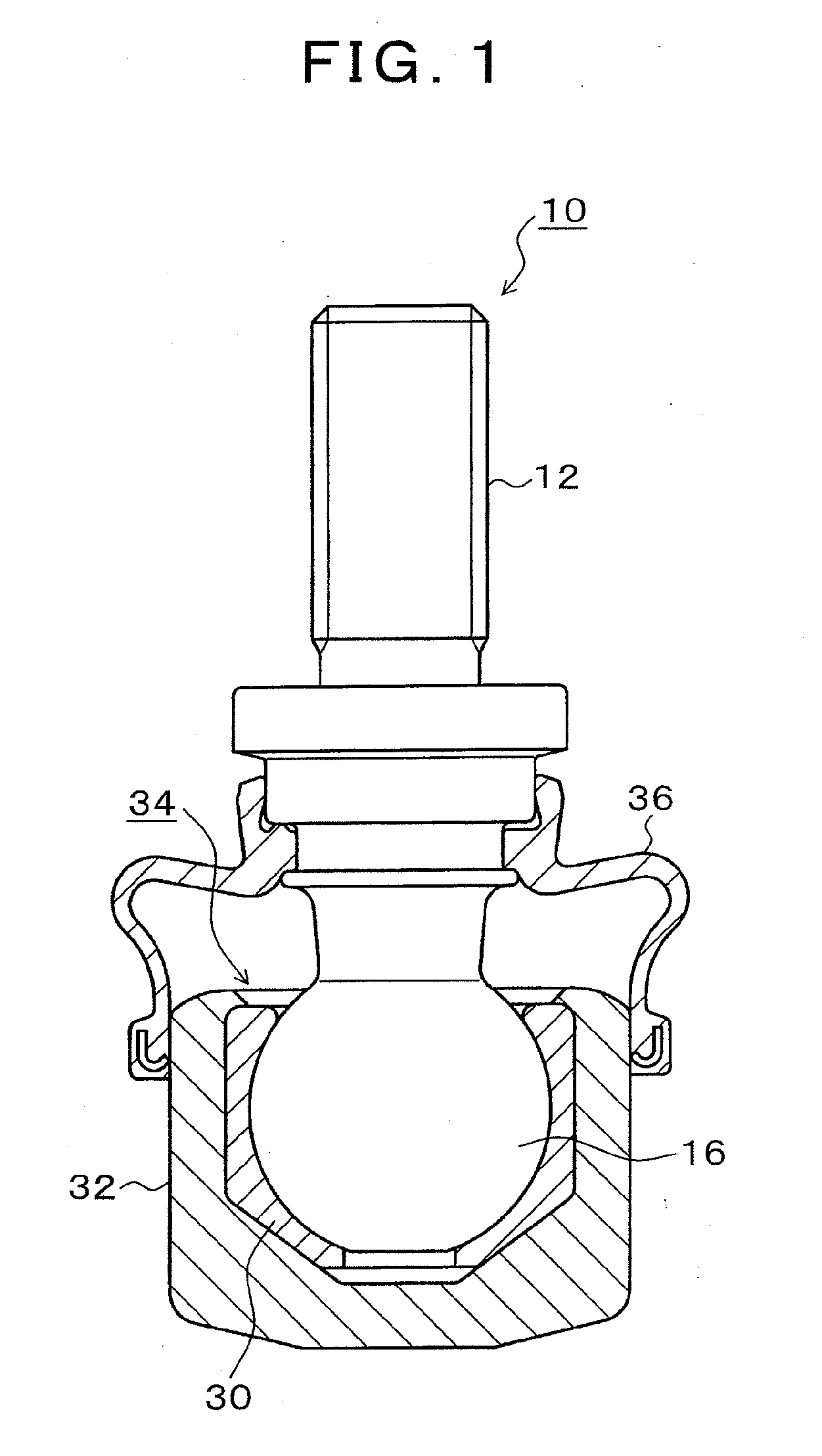Ball joint
- Summary
- Abstract
- Description
- Claims
- Application Information
AI Technical Summary
Benefits of technology
Problems solved by technology
Method used
Image
Examples
Embodiment Construction
[0021]FIG. 1 is a cross-sectional view showing an embodiment of a ball joint of the present invention. In FIG. 1, the ball joint 10 is composed of a ball stud 12, a ball seat 30, a socket 32, and a dust cover 36. In the ball joint 10, a spherical head part 16 formed at an end of the ball stud 12 is incorporated into the socket 32 via the ball seat 30, and an opening 34 of the socket 32 is subjected to caulking to swingably and turnably support the ball stud 12. The dust cover 36, which prevents water and dust from entering the inside from the opening 34, is attached between the ball stud 12 and the socket 32.
[0022]FIGS. 2A and 2B are explanatory drawings respectively showing the dust cover 36 and the ball stud 12 of FIG. 1. FIG. 2A is a cross section of the dust cover 36, and FIG. 2B shows the ball stud 12. In FIG. 2A, the dust cover 36 is formed of an elastic material such as rubber, has a small-diameter opening 40 at one end of a film part 38 and a large-diameter opening 52 at the...
PUM
 Login to View More
Login to View More Abstract
Description
Claims
Application Information
 Login to View More
Login to View More - R&D
- Intellectual Property
- Life Sciences
- Materials
- Tech Scout
- Unparalleled Data Quality
- Higher Quality Content
- 60% Fewer Hallucinations
Browse by: Latest US Patents, China's latest patents, Technical Efficacy Thesaurus, Application Domain, Technology Topic, Popular Technical Reports.
© 2025 PatSnap. All rights reserved.Legal|Privacy policy|Modern Slavery Act Transparency Statement|Sitemap|About US| Contact US: help@patsnap.com



